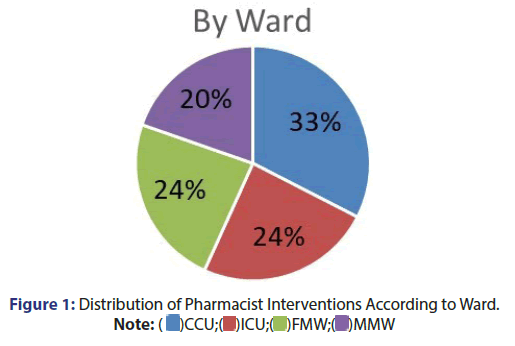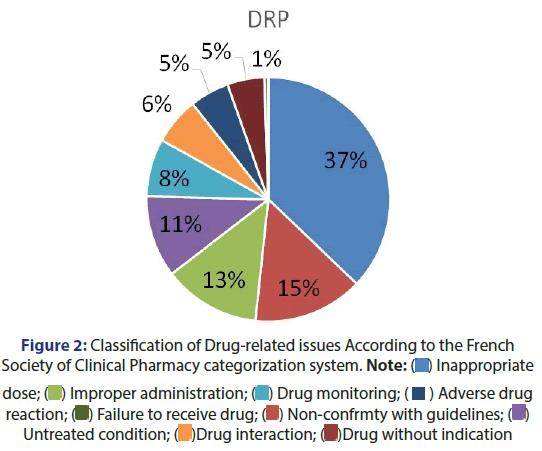Evaluation of Clinical Pharmacy Services in Secondary Care Setting in Kuwait: A Descriptive Analysis for Services in Medical, Intensive and Cardiology Care Units
Received: 10-Apr-2023, Manuscript No. Jbclinphar-23-94967; Editor assigned: 12-Apr-2023, Pre QC No. Jbclinphar-23-94967; Reviewed: 26-Apr-2023 QC No. Jbclinphar-23-94967; Revised: 03-May-2023, Manuscript No. Jbclinphar-23-94967; Published: 10-May-2023
Citation: Hajjiah AM, Al-Sanea M, Bouliyan D, et al. Evaluation of Clinical Pharmacy Services in Secondary Care Settings in Kuwait: A Descriptive Analysis for Services in Medical, Intensive and Cardiology Care Units. J Basic Clin Pharma.2023,14(2):226-227.
This open-access article is distributed under the terms of the Creative Commons Attribution Non-Commercial License (CC BY-NC) (http://creativecommons.org/licenses/by-nc/4.0/), which permits reuse, distribution and reproduction of the article, provided that the original work is properly cited and the reuse is restricted to noncommercial purposes. For commercial reuse, contact reprints@jbclinpharm.org
Abstract
Clinical pharmacy services form an essential part of healthcare in secondary care settings. Although still in its infancy in Kuwait, clinical pharmacy have developed dramatically over the past 10 to 15 years. We conducted a descriptive evaluation over a period of 5 months to assess the nature and impact of clinical pharmacy services in a semi-government hospital in Kuwait. Successful interventions during the study period were 590 in medical, cardiology and intensive care units and wards. Clinical pharmacy led to a substantial change in pharmacy profession from a drug-oriented to a more patient-centered approach. It is the area of pharmacy that focuses on the science and practice of rational medication use, as defined by The American College of Clinical Pharmacy.
Keywords
pharmaceutical care; pharmacist interventions; drug-related problems; Clinical pharmacy; cardiology care
Introduction
In recent years, pharmacists’ roles have advanced to focus more on direct healthcare through the application of pharmaceutical care as defined by Hepler and Strand in 1990. Clinical pharmacists form an integral part of the healthcare system; body of evidence supporting their evolving roles and responsibilities and their impact on drug-related problems is overwhelming. Pharmacists’ role in providing pharmaceutical care services makes it essential to acquire up-to-date knowledge to make the most appropriate clinical decision with regard to patient care [1]. The services are dependent upon clinical pharmacist collaborating with all healthcare providers, including physicians, surgeons, nurses and nutritionist to optimize medication use. Clinical pharmacists deliver a systematic and consistent quality of service to each individual patient in accordance with evidence-based guidelines. The provided services are proven to be well perceived and demanded by physicians and other members of the healthcare team. Pharmacist collaboration with all healthcare providers allowed them to become integral members of the healthcare team and physicians recognize that their input provides incremental value that improves the patients’ quality of life [2, 3]. Clinical pharmacists ensure that all stages of medications management is optimal and evidence-based. They are also responsible for helping to identify, prevent, and resolve any arising drug-related problems. This study will evaluate the types of drug related problems, the strategies used to identify and manage drug related problems, and the outcomes associated with the interventions in a secondary case hospital in Kuwait.
Materials and Methods
Clinical pharmacy services are implemented in different wards. Six clinical pharmacists covering medical wards in addition to cardiology care and intensive care units; during morning duty time between 7 am to 3 pm. The pharmacists attend daily ward rounds with the health care providers where they provided evidence-based recommendations and advised to deliver the optimal patient care [4-6]. Interventions and recommendations were documented daily after rounds electronically into a specific documentation system and in the electronic medical recording system.
All interventions were collected retrospectively with thorough evaluation of the interventions that were recommended by clinical pharmacists. The study carried out in a period of five months from October 2021 to February 2022. An electronic system was used to document the interventions that were recommended by the clinical pharmacists. This system includes the total number of interventions and the data relating to interventions, such as patient profile number, date, ward, type of intervention, type of drug related problem, and the reason for each intervention [7]. Collected data was classified and analysed by the type of interventions. A descriptive analysis technique with (Microsoft Excel, version) was used to analyse and evaluate the documented information.
Statistical analysis
Only descriptive statistical analysis using Microsoft® Office Excel 2016 were performed. The results were expressed as percentages and numbers of the clinical pharmacists’ interventions in each covered unit (intensive care, cardiac care and medical wards) and the category of the assessed drug-related problem. Categorization was based on the French Society of Clinical Pharmacy classification of drug-related problems and pharmacist interventions [6,8,9].
Results
During the study period, from October 2021 until February 2022 (5 months), the clinical pharmacist team successfully implemented 590 interventions. The highest percentage of the interventions (44%, n=255) were successfully performed in medical wards, in which 24% (n=139) and 20% (n=116) of the interventions were completed in female and male wards, respectively. Thirty three percent (n=192) and 24% (n=143) of the interventions were carried out in the cardiac care unit and the intensive care unit, correspondingly as shown in (Figure 1). With regard to the identified Drug-Related Problems (DRP), more than one third (37%, n=219) of them were categorized as inappropriate dose and followed by non-conforming with guidelines (15%, n=86), improper administration (13%, n=76), and untreated condition (11%, n=64). Comparable percentages for drug monitoring (8%, n=45), drug interaction (6%, n=37), adverse drug reactions (5%, n=31), and drugs without indication (5%, n=29) were obtained. Only 1% (n=3) of the detected drug-related problems was for failing to receiving the medication. Figure (2) represents the percentages of each category of detected drug-related problems.
Figure 2: Classification of Drug-related issues According to the French
Society of Clinical Pharmacy categorization system.
Note:  Inappropriate
dose;
Inappropriate
dose;  Improper administration;
Improper administration;  Drug monitoring;
Drug monitoring;  Adverse drug
reaction;
Adverse drug
reaction;  Failure to receive drug;
Failure to receive drug;  Non-confrmty with guidelines;
Non-confrmty with guidelines;  Untreated condition;
Untreated condition;  Drug interaction;
Drug interaction;  Drug without indication
Drug without indication
Discussion
Clinical pharmacy services in Kuwait have developed tremendously in the past decade. Huge strides in provision of consistent pharmaceutical care through attendance of daily rounds with other healthcare professionals have cemented their role in direct patient care. The clinical pharmacy team documented interventions between October 2021 and February 2022. Drug-related problems described the type of error seen by the clinical pharmacist in a given ward. Drug related problems were sub-categorized according the French Society of Clinical Pharmacy validated classification system. The majority of drug-related problems were under the category of inappropriate dosing (37%) indicating that clinical pharmacists were crucial in preventing medical errors due to inappropriate dose. Non-conformity with guidelines (15%) was the second most drug-related problem. This illustrates the role of clinical pharmacists in providing the necessary information based on evidence-based international guidelines. Administration errors were avoided by educating nursing staff on proper administration modalities (13%). Avoidance of toxicity was achieved by drug monitoring (8%). Pharmacists were also able to participate in minimizing drug interactions (6%), avoiding the use of unnecessary medication and resolving adverse drug reactions by (5%).
The interventions section described the type of action taken by the clinical pharmacist in response to any given error. Interventions were sub-categorized into dose adjustment, drug discontinuation, drug monitoring, and addition of new drug, administration modalities optimization, drug switch, and change of administration route. The majority of the clinical pharmacy team interventions involved dose adjustments at 41%. The next category was drug discontinuation and addition of new drug at 16% and 13%, respectively. Drug monitoring was afterwards with 13%, followed by administration modalities optimization and drug switch both at 7%. The least intervention was the change of administration route category.
Clinical pharmacist interventions in hospital setting reduced preventable adverse events by 78% according to a recent evidence. Involving a clinical pharmacist in critical care has resulted in avoiding potential expenditure of over $210,000 in 4.5 months. Perceptions of Physicians and nurses in the United Arab Emirates were positive towards expanding clinical pharmacy services to the emergency department with 66.4% indicating that the presence of a clinical pharmacist would contribute to better management of medications. Clinical pharmacist participation in wards was assessed in a study that found medication communication was greater when a clinical pharmacist was involved and there was improvement in medication appropriateness especially high-risk medications . In addition, pharmacist involvement did not prolong time spent with each patient [3]. The purpose of the study was to evaluate the clinical pharmacist role in a hospital setting as part of the multidisciplinary team. The majority of the results reflect on the impact of clinical pharmacists in accurate prescribing, in line with the latest guidelines, and adjusted for the patients’ needs. The benefit of having a clinical pharmacist was shown also in special cases where drug monitoring is a necessity. To our knowledge, this is the first study to evaluate and assess the impact of clinical pharmacy services in a secondary care setting in Kuwait. Limitation and challenges of our study were the lack of staff necessary to provide a wider service across the hospital such as in surgical and pediatric wards. The study reflects interventions made in only four adult wards. We hope to provide and compare with future date to be able to make a thorough evaluation of the impact of clinical pharmacists in hospital setting.
Conclusion
Clinical pharmacy services are pivotal in healthcare systems. Our study demonstrates the important role of such services in improving efficacy of pharmacotherapy and patient safety. Quantifying clinical services through evaluation and assessment of pharmacist interventions adds worth to the overall role of pharmacists, solidifies their role in healthcare and helps in expanding future clinical services. Further interventional studies are needed to assess the factual impact of such services on overall healthcare.
References
- American College of Clinical Pharmacy. The definition of clinical pharmacy
- Hepler CD, Strand LM. Opportunities and responsibilities in pharmaceutical care. Am J Hosp Pharm. 1990;47(3):533-543.
- Matowe L, Abahussain EA, Al-Saffar N, et al. Physicians’ perceptions and expectations of pharmacists’ professional duties in government hospitals in Kuwait. Med Princ Pract. 2006;15(3):185-189.
[Crossref] [Google Scholar] [PubMed]
- Vinterflod C, Gustafsson M, Mattsson S, et al. Physicians’ perspectives on clinical pharmacy services in Northern Sweden: a qualitative study. BMC Health Serv Res. 2018;18(1):1-9.
- Lemay J, Waheedi M, Al-Taweel D, et al. Clinical pharmacy in Kuwait: Services provided, perceptions and barriers. Saudi Pharm J. 2018;26(4):481-486.
[Crossref] [Google Scholar] [PubMed]
- Raimbault-Chupin M, Spiesser-Robelet L, Guir V, et al. Drug related problems and pharmacist interventions in a geriatric unit employing electronic prescribing. Int J Clin Pharm. 2013;35(5):847-853.
[Crossref] [Google Scholar] [PubMed]
- Jacobi J. Clinical pharmacists: practitioners who are essential members of your clinical care team. Rev Méd Clín Las Condes. 2016;27(5):571-577.
- Fahmy SA, Rasool BK, Abdu S. Health-care professionals' perceptions and expectations of pharmacists' role in the emergency department, United Arab Emirates. East Mediterr Health J. 2013;19(9):794-801.
[Crossref] [Google Scholar] [PubMed]
- Bullock B, Donovan P, Mitchell C, et al. The impact of a pharmacist on post-take ward round prescribing and medication appropriateness. Int J Clin Pharm. 2019;41:65-73.
[Crossref] [Google Scholar] [PubMed]




